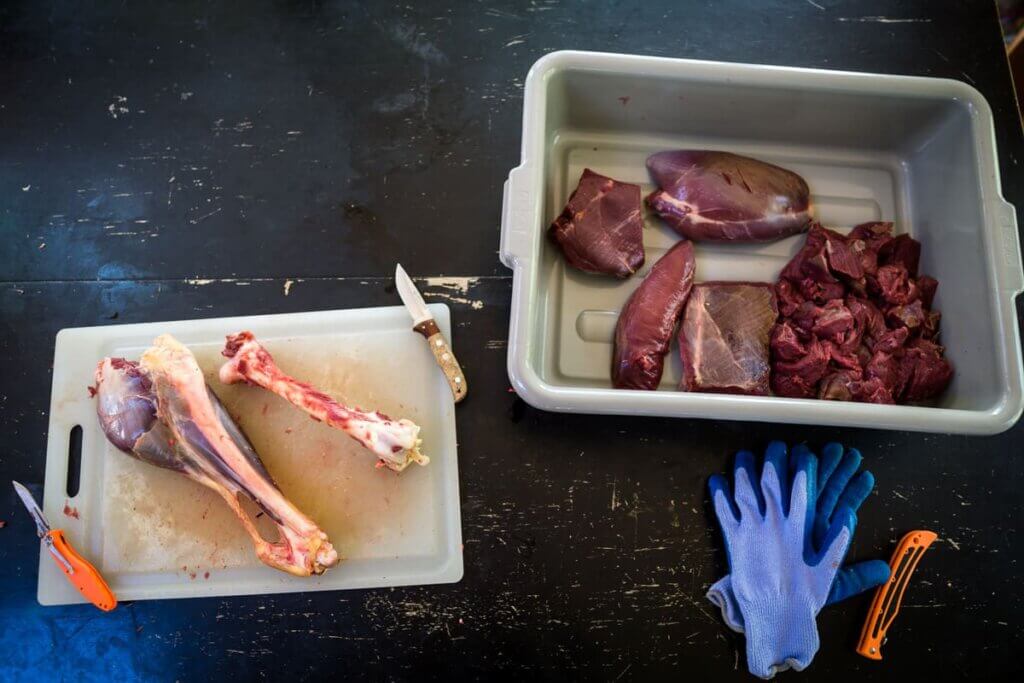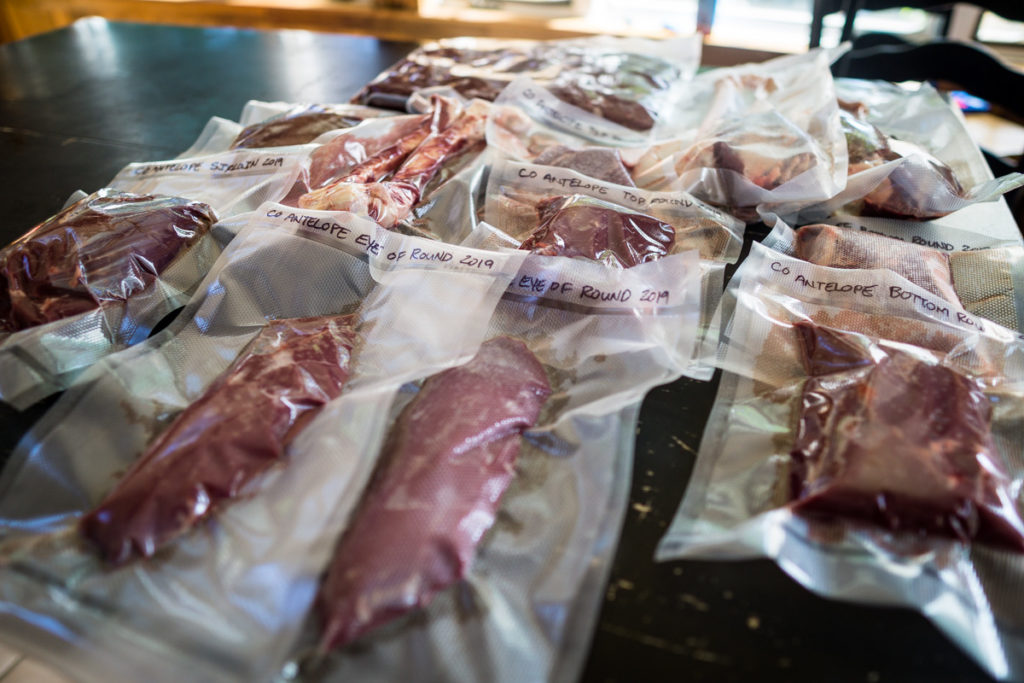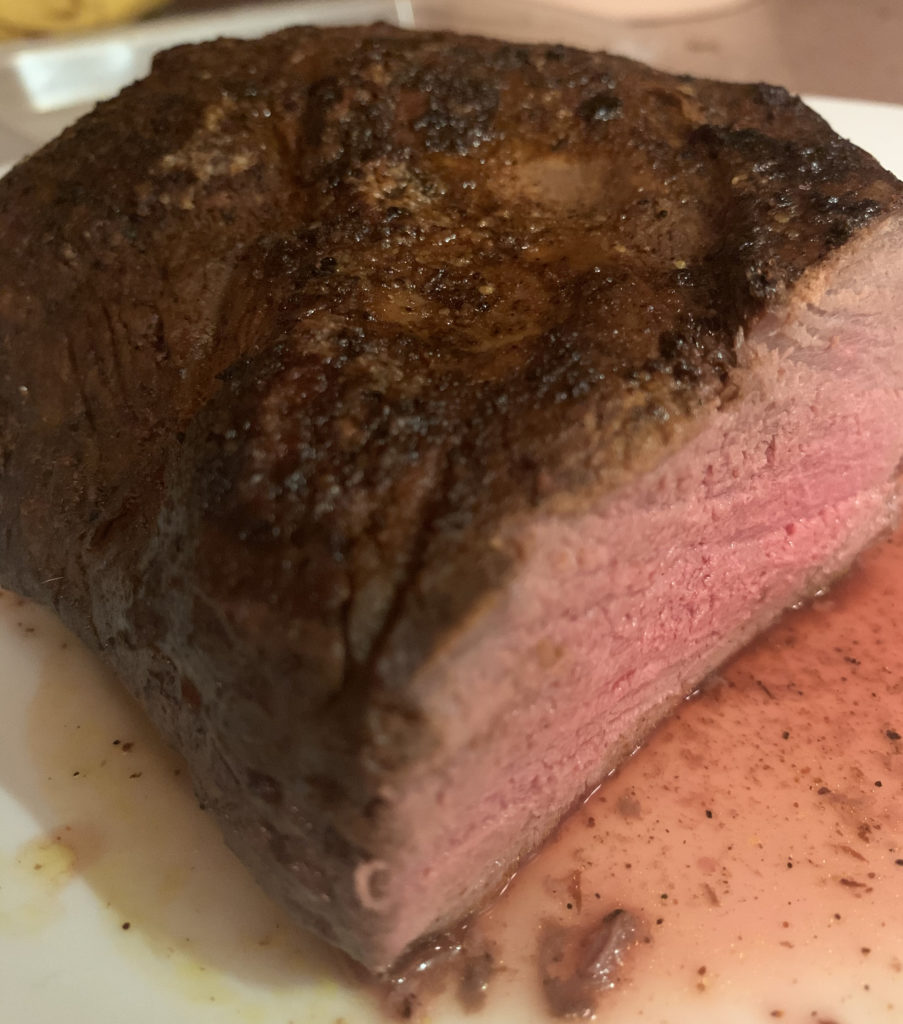By Zach Lazzari | Photos by Ryan McSparran
Antelope meat gets mixed reviews from hunters. It’s a difficult thing for me to understand personally, because I can’t get enough of antelope. When properly cared for, pronghorn is easily among my favorite big game meats. Improper care can leave any wild animal with a gamey taste. But with a little attention, antelope is right up there with the best wild meats.
As we approach antelope hunting season in Wyoming, here are a few processing and cooking tips to make the most out of your pronghorn meat:
Field Dressing and Preparing Antelope
Field care is extremely important and will determine the quality of the meat. Quickly cooling and processing the antelope is imperative in the field. Gut your animal and allow for heat escape soon as possible.
Hang the quarters in a cool, dry space until it can be processed or taken to a local processor. Lastly, process and freeze the cuts for consumption. If you process yourself be sure to take out as much of the connective tissue and fat. While fat is a flavor additive in beef and other consumer meats it will only detract from the great flavor of your antelope. If you want a fat additive to help with a grind I would suggest adding a pork or beef suet.
Working with Prime Cuts
The prime cuts are perfect for steaks and roasts. I like my antelope steaks rare to medium rare, seared and cooked quickly. Cooking individual steaks is an option but doing the entire backstrap in one piece on the grill is also fun for a group dinner. The unique savory taste of perfect antelope steaks will please the pickiest pallets.
Pan-frying steaks in a cast iron skillet is simple and easy. No marinades are necessary either. Cut your steaks and add sea salt and pepper. Occasionally, I will add a pinch of cayenne pepper as well. Heat the pan on high, add butter or oil and sear for 3-4 minutes on each side. The thickness of the steaks will determine the duration. I use a fork to poke the meat and pull it off to rest for 8 minutes when the fork easily penetrates about a quarter of the exterior.
On the barbecue, cut the steaks or take an entire backstrap and splay it in half or thirds. Mix olive oil, Worcestershire sauce and minced garlic and rub liberally on the meat. Rub down with sea salt and pepper and heat the grill to a high heat setting. Set the meat on the grill and allow the oils and seasoning to sear on each side for 4-5 minutes. Pull the meat and rest for 10 minutes before serving. An internal temperature of 130-degrees is good for medium-rare roasts and big cuts. Do not over cook your antelope it will only become tough and dry.
Cooking the Tough Cuts
The tougher cuts like the shanks, neck and front quarters are perfect for slow-cooked recipes that tenderize the meat and break down connective tissue. Stews and chili are two easy favorites. Cooking on low heat for 8-10 hours will bring out more flavor in stew and chili recipes.
You can take any standard stew or chili recipe and substitute the antelope for other meat options. I like it spicy and add a jalapeno pepper to chili recipes, removing the pepper just before serving. The slow cooker is a game changer for tenderizing the tougher cuts on any game animal.
To learn more about guided antelope hunts with Table Mountain Outfitters, please visit our antelope hunting page. For booking, availability and other details, please don’t hesitate to contact us.
Zach Lazzari is an OUTDOOR WRITER, fly fishing guide and hunting enthusiast. Follow Zach at BUSTEDOARLOCK.COM.





